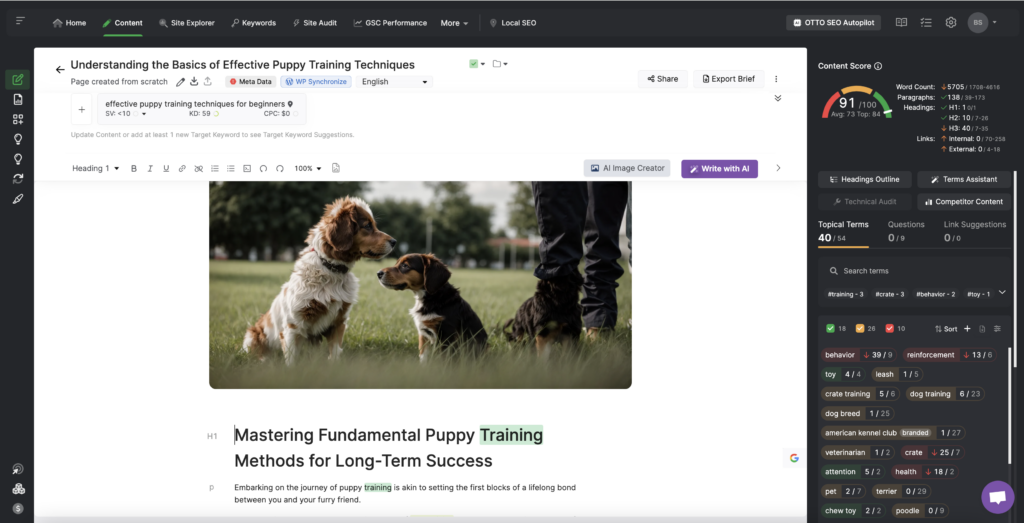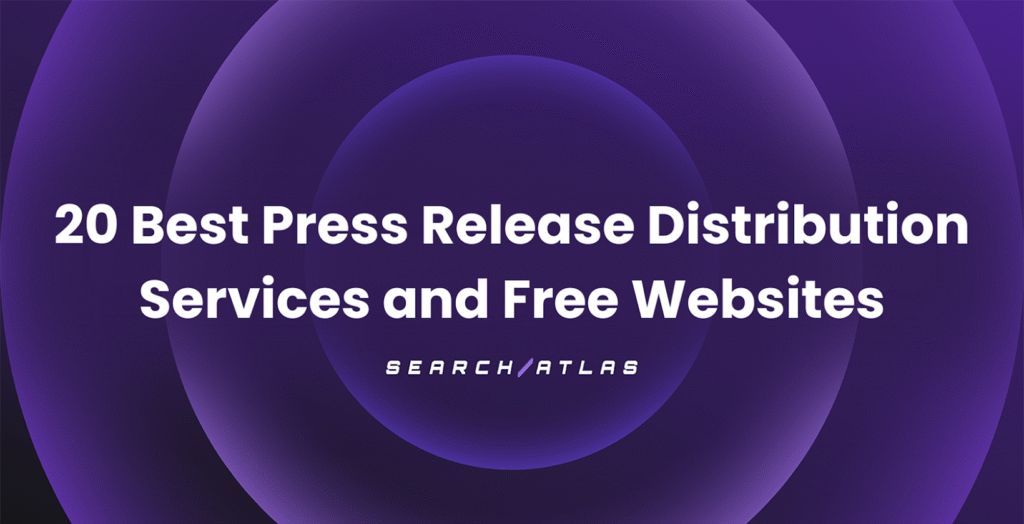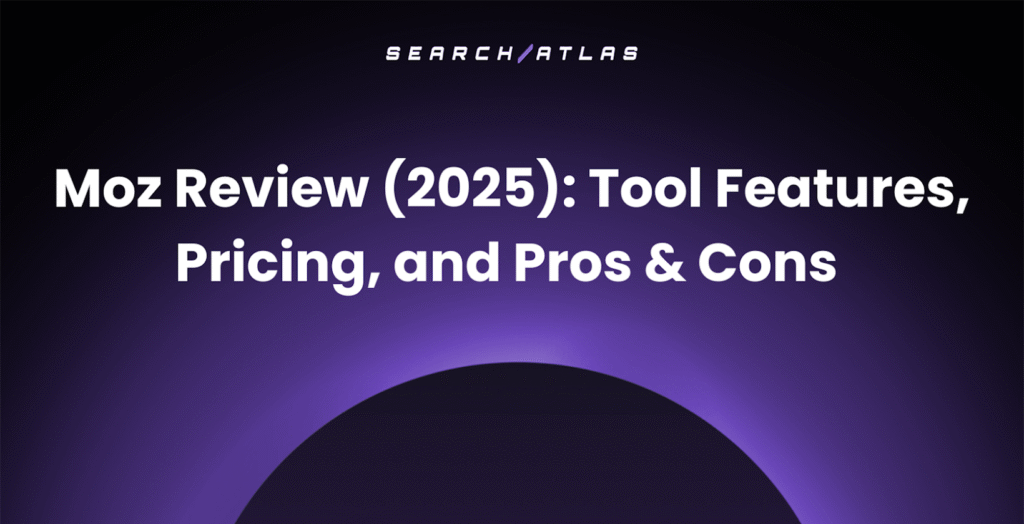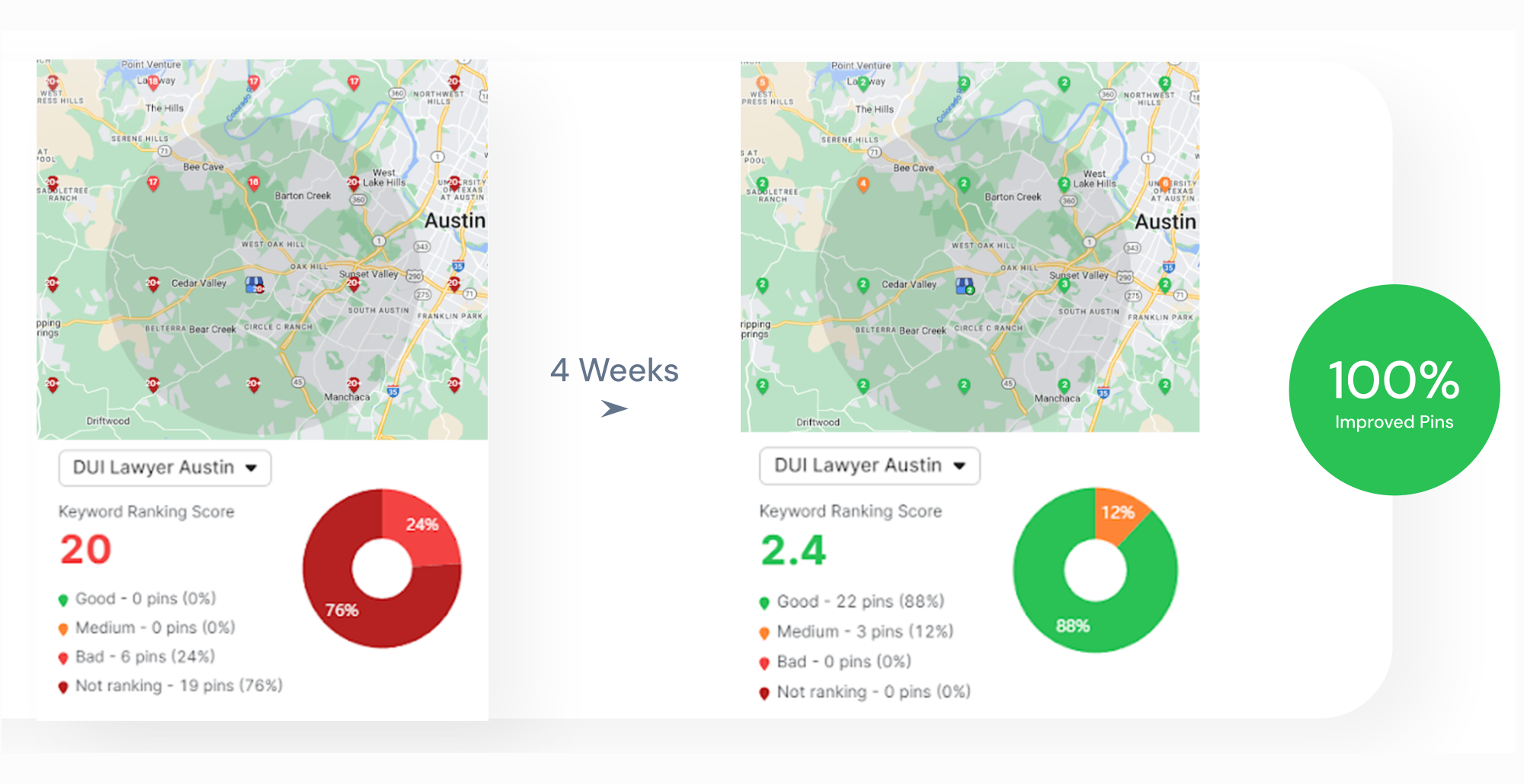Long-tail keywords in SEO are the secret weapon for ranking higher and attracting the right audience. 💁
These are longer, more specific phrases people search for when they know exactly what they want. While they don’t get as many searches as broad, high-competition terms, they tend to convert better because they match user intent more precisely.
You’ve probably used them yourself without even realizing it. Maybe you searched for “easy homemade pizza dough recipe” on a Friday night or “dog-friendly hiking trails near Denver” before planning a weekend adventure.
We’re going to explain what long-tail keywords in SEO are, as well as four expert tips on how to find them and use them effectively with content optimizer tools.
Ready to learn more? Let’s go. 🏃
What are Long-Tail Keywords?
Long-tail keywords are longer, more specific search phrases, usually three or more words, that attract a highly targeted audience.
Instead of searching for “laptops”, someone might look for “lightweight laptop for travel”. These terms have lower search volume but higher conversion potential.
Long-tail keyword SEO helps you rank for these less competitive phrases, reaching users with clear intent, whether they’re researching, comparing, or ready to buy. 🛒
These keywords tend to share a few key characteristics:
- Specificity: They target a niche audience with precise needs.
- Lower Search Volume: Individually, they get fewer searches than broad keywords.
- Higher Intent: Users searching long-tail phrases are often closer to taking action.
- Less Competition: Fewer websites target these terms, making them easier to rank for.
Long-Tail vs. Short-Tail Keywords: What’s the Difference?
Long-tail keywords are more specific than short-tail ones. A short-tail keyword like “coffee” is broad, highly competitive, and attracts a wide audience with different interests. A long-tail keyword like “best organic coffee for cold brew” targets a smaller, more focused group actively looking for something specific.
Because they’re more precise, long-tail keywords face less competition and better match user intent, making them a smarter choice for SEO.

What are the Benefits of Long-Tail Keywords?
Focusing on long-tail keywords is one of the smartest SEO strategies because they attract more targeted traffic, convert better, and are easier to rank for.
Unlike short, highly competitive keywords, long-tail phrases match specific user intent, making them valuable for both organic search and paid ads. Here’s why they matter:
- Less Competition: Broad keywords like coffee are dominated by big brands. A long-tail keyword like best single-origin coffee beans for espresso faces less competition, giving smaller businesses a better shot at ranking.
- Higher Conversion Rates: Users searching for where to buy Colombian dark roast coffee near me are more likely to make a purchase than someone just searching for coffee. These specific searches indicate stronger intent.
- Better for Voice Search: People speak differently than they type. Instead of searching coffee shops NYC, a voice search user might ask, Where’s the best specialty coffee shop in Brooklyn? Helping capture voice search traffic.
- Faster Rankings for New Content: Competing for coffee takes years, but ranking for how to make creamy oat milk cold brew is much more achievable, even for a newer website.
- Lower PPC Costs: Highly competitive keywords drive up ad costs. Targeting organic fair-trade coffee subscription instead of just coffee subscription can lower cost-per-click (CPC) while still bringing in buyers.
- Endless Content Opportunities: Since users naturally search with long, descriptive phrases, there’s always fresh keyword potential. A blog can cover best coffee beans for French press and how to brew a smooth cold brew at home.
4 Easy Tips on How to Find the Best Long-Tail Keywords
Finding long-tail keywords doesn’t have to be complicated.
We’ll cover the 4 best ways to discover them, easy methods that can be automated with SEO tools, making your life a lot easier.
1. Use Keyword Tools to Discover Valuable Long-Tail Keywords
Start by brainstorming a list of potential keyword ideas. You can use tools like a blog idea generator to get your creativity flowing and jot down your initial thoughts. 💡
Next, list your main keywords. These could be related to what competitors are targeting, core topics in your industry, or local terms relevant to your business.
Once you have your initial list, it’s time to use a keyword research tool. It will show you the search volume, ranking difficulty, and related queries for each keyword.
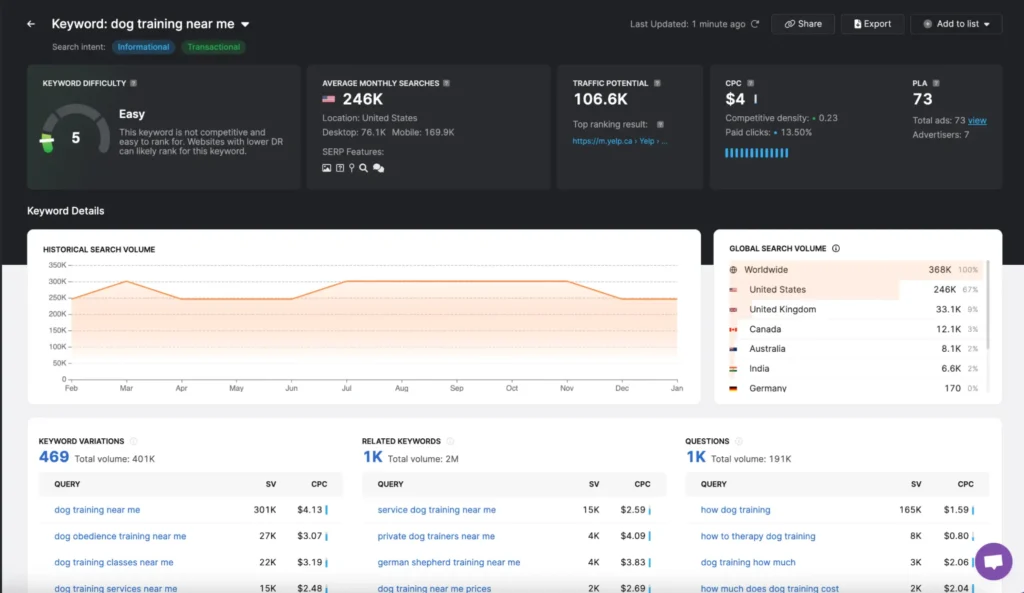
To dive deeper, use a tool like the Keyword Magic Tool. Enter your main keywords and scroll through the results to find variations with lower search volume. These are usually long-tail keywords, longer, more specific phrases people are actually searching for.
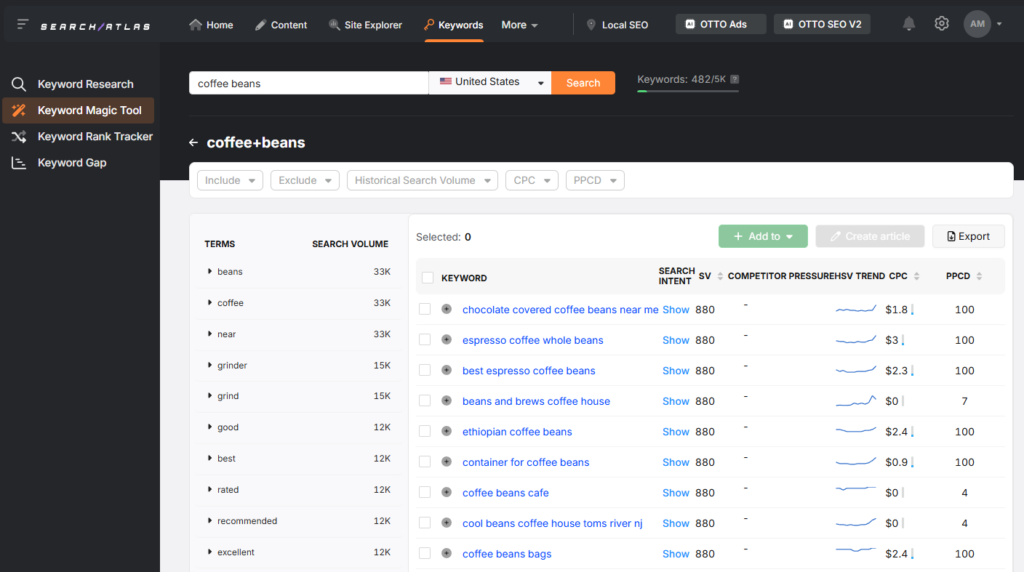
For example, instead of just targeting “coffee beans,” you might go for “best espresso coffee beans.” Clicking on each keyword will give you more details, like search intent, difficulty, and related terms.
2. Use Google’s Own Search Features to Identify Search Trends
Type your main keyword into the Google search bar without pressing enter. As you type, Google will automatically suggest longer, more specific phrases related to what you’re searching for.
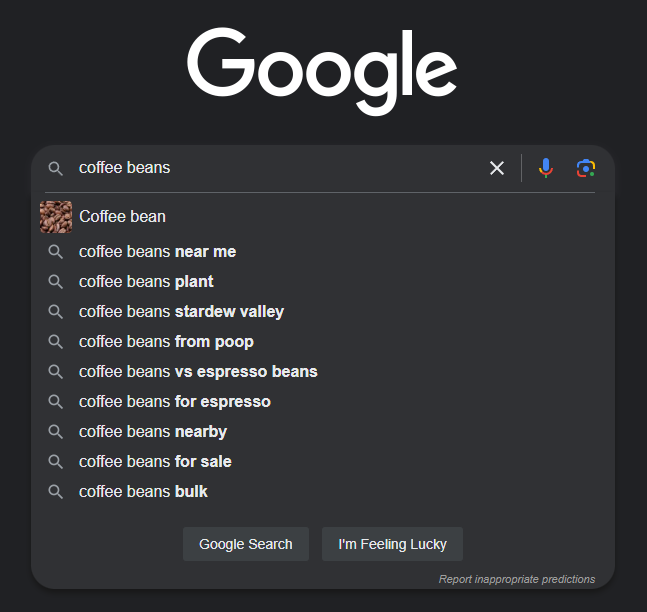
These autocomplete suggestions are often long-tail keywords that people are actively searching for.
Another helpful spot is the “People also ask” box that appears below the main search results. This section is filled with questions related to your search, giving you more long-tail keyword ideas.
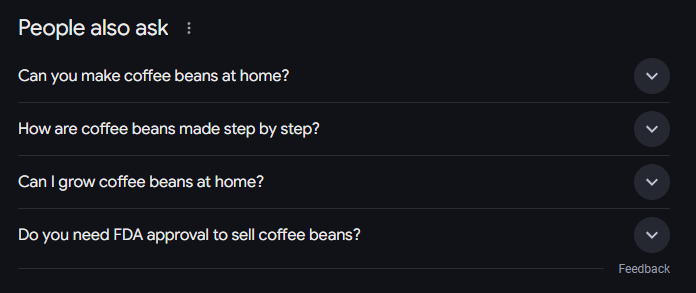
You can also look at the “People also search for” section at the bottom of the search results page. This part offers even more related search terms that can inspire your next piece of content.

Keep track of all the long-tail keywords you find, as they can guide you in creating new blog posts, FAQs, or enhancing your existing content.
3. Analyze Your Competitors’ Keywords to Find Content Gaps
Take a look at your competition to see what keywords they’re ranking for. 👀
By using keyword gap analysis and competitor analysis tools, you can uncover opportunities they may have missed. This allows you to create more targeted content that fills in the gaps and attracts a specific audience.

Start by examining the keywords your competitors are ranking for, the topics they’re covering, and how their content is performing.
As you browse their content, look for any areas where they’re not fully addressing a topic, or where you could dive deeper with more detailed information.
For example, if you’re in the coffee niche and your competitor ranks for “best espresso machines,” but they haven’t targeted “best espresso machines for small kitchens,” you can create content around that long-tail keyword.
4. Search Forums and Boards to Uncover Emerging Topics
One great way to find long-tail keywords is by checking out Google’s “Forums” tab. This section lets you quickly find active discussions on topics people are genuinely interested in.
You can see real conversations and get a better sense of what questions or concerns people have.
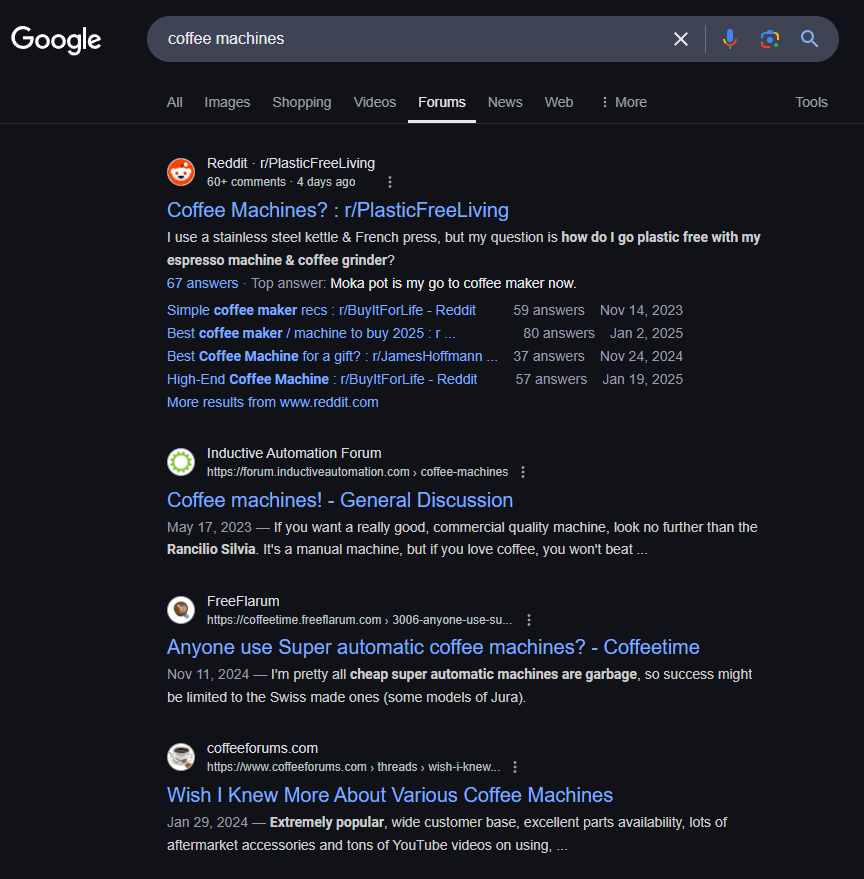
For example, if a forum is buzzing with discussions about “how to clean your coffee machine,” you’re seeing firsthand what users struggle with or want to learn more about.
These discussions can reveal specific problems people are facing and help you pinpoint long-tail keywords to target.
How to Use Long-Tail Keywords Effectively
Now that you’ve found your long-tail keywords, it’s time to put them to work! 👷
These keywords are key to driving the right traffic and improving your rankings. We’ll show you simple, effective ways to use them and hit your SEO goals with ease.
Analyze the User’s Search Intent to Improve Relevance
Understanding search intent is key to giving users exactly what they’re looking for. Simply adding your keyword to a page isn’t enough. Your content must match the user’s intent behind the search.
For example, if someone searches for “best coffee machines for small kitchens,” they likely want a list of top recommendations tailored to their needs, not just a general article on coffee machines.
Long-tail keywords typically fall into four intent categories:
- Informational: Users want information (e.g., “how to make the perfect espresso”).
- Navigational: Users are looking for a specific site or page (e.g., “Starbucks website”).
- Commercial: Users are researching before a purchase (e.g., “best coffee maker for the price”).
- Transactional: Users are ready to buy (e.g., “buy espresso machine online”).
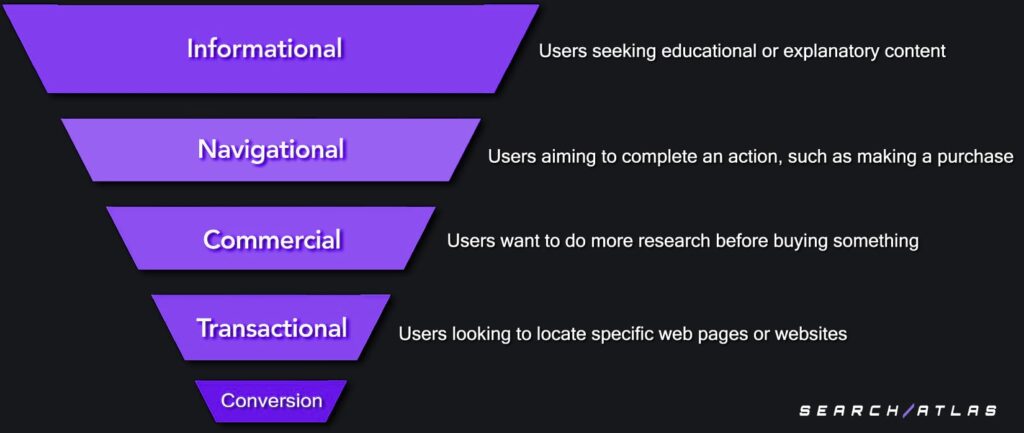
You can create content that directly addresses what the user needs by knowing the search intent behind your long-tail keywords. To understand search intent more thoroughly, check out our article on keyword intent.
Use an AI Content Writer to Streamline Content Creation
It’s time to put them to work in your content. ✍️
But let’s face it, writing SEO-optimized content manually can be time-consuming. That’s where SEO content tools like Content Genius can save you tons of effort.
Simply plug your long-tail keywords into Content Genius, an AI-powered tool designed to help you create SEO-friendly, human-like content. It analyzes top-ranking pages to give you insights on keywords, subheadings, NLP terms, and internal links.
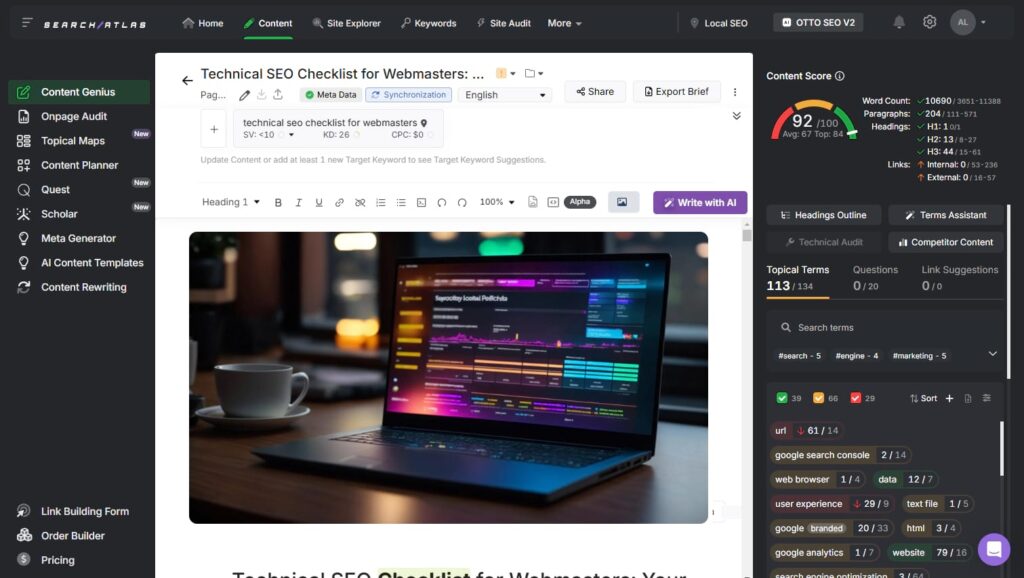
With just one click, you can generate your article with images. From there, you can fine-tune your content by adjusting the tone to match your brand’s voice and choosing between the GPT or Claude AI models for the best results.
When everything’s ready, you can publish your article instantly.
Use a Content Optimizer to Enhance Content Quality
Just using long-tail keywords and their variations might not be enough to get you to the top of the search results. To truly stand out, you need to use SEO content optimization tools.
Scholar digs deep into every part of your content to make sure it’s polished and perfect for both search engines and your readers.
Simply plug in the link to your content, whether it’s a live page or a Google Doc, along with your long-tail keyword, and Scholar will give you a score from 0 to 100.
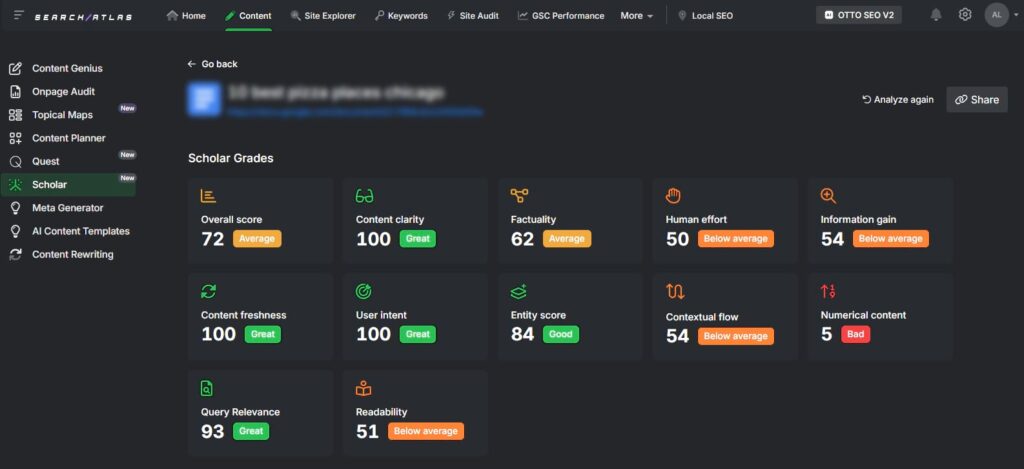
It then highlights areas where you can improve, like:
- Content Clarity: Making sure your writing is clear and easy to follow.
- Factuality: Double-checking that your facts are spot on and relevant.
- Human Effort: Ensuring there’s a personal touch beyond just automation.
- Information Gain: Finding unique insights that your competitors might be missing.
- Content Freshness: Making sure your content is up-to-date.
- User Intent Alignment: Checking if your content meets what the user is really looking for.
- Entities: Adding relevant topics from Google’s Knowledge Graph.
- Contextual Flow: Making sure your content flows logically and naturally.
Test and Monitor the Results to Refine Your Strategy
SEO is a marathon, not a sprint. To really make the most of your long-tail SEO strategy, it’s important to keep refining things even after you’ve launched or updated your pages.
If you don’t stay on top of it, there’s a good chance your rankings for those valuable keywords could dip. To see how your long-tail SEO is really performing, keep an eye on a few key things:
- Rankings: Tracking your keyword rankings is key, but don’t expect quick results. SEO takes time, so stay patient and monitor other metrics as well.
- Traffic: Traffic is more than a vanity metric. Focus on which pages bring the most visitors and where they’re coming from to optimize your site. Check our blog on how to generate blog traffic to learn more.
- Revenue: SEO should boost sales. Tracking revenue helps you see if your long-tail SEO efforts are delivering tangible results.
- Conversions: Conversions are crucial. Whether it’s more newsletter sign-ups or purchases, if you’re targeting the right keywords, you should see an increase in conversions.
You don’t have to constantly check these metrics manually with automated and customizable reporting tools.
How Automation Drives Long-Tail Keyword Rankings in SEO
Long-tail keywords are key to boosting SEO, driving traffic, and increasing conversions. While finding them is easy, using them strategically is crucial to maintaining strong rankings.
Without the right approach, your efforts could go to waste. 🗑️
Search Atlas makes it simple with tools that automate keyword research and content creation. Scholar helps you produce high-quality, SEO-friendly content, while OTTO scans your existing pages, finding and updating with new keyword opportunities.
Skip the manual work and let Search Atlas do the heavy lifting. Try it free with no commitment! Cancel anytime.


